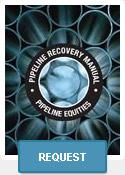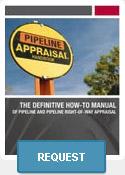Pipeline Equities
PO Box 571977
Houston, Texas 77257
Phone: 713-623-0690
Pipeline Recovery
excavation & removal
Damage Assessment
of easements
Pipeline Appraisal
pipeline property valuation
Pipeline Equities
PO Box 571977
Houston, Texas 77257
Phone: 713-623-0690
excavation & removal
of easements
pipeline property valuation
Most issues or problems regarding a pipeline right-of-way (ROW) can be resolved by a thorough investigation of the original easement agreement. This document determines the terms and conditions of laying and maintaining a pipeline on a property. It is the base contract between the landowner (grantor) and the pipeline operator (grantee).
It is the law of the land, and almost anything that is negotiated between the grantor and grantee can be included in the easement or right-of-way contract:
Definition of the Easement – An easement agreement may contain the exact length and width of the easement, or, in the case of a blanket easement agreement, an entire tract of land. With a blanket easement agreement, a pipeline can be laid anywhere on the land in question.
Ingress/Egress Rights – An easement agreement contains the right to enter (ingress) and exit (egress) a piece of property for the purpose of laying and maintaining a pipeline. The pathway for entry and exit may be included as well.
Pipeline and Throughput – An easement agreement may specify the diameter of the pipe and the number of lines to be laid in the easement, as well as what is to be transported within these pipelines.
Duration – An easement agreement may specify the length of time that the contract is in effect. During this time, the grantee has the right to use the easement as defined in the agreement. Less than 10% of all easement contracts have a termination clause.
Fees – An easement agreement may specify payments that should be made by the grantee to the grantor for the use of the land.
Other Conditions – An easement agreement may specify conditions in case of damages to land or crops, as well as rights for the grantee to add other fixtures or appurtenances in the future.
Mediation/Arbitration – An easement agreement may specify provisions for mediation or arbitration should the parties disagree on provisions.
The easement agreement should be the last word in any pipeline issue (because it is a legal document), but the terms of the agreement are always subject to interpretation. For the most part, the agreements are clear and precise as to rights and privileges given to the grantee from the grantor.
Almost all easement contracts are renditions or repeats of the legal language used since pipeline easements began. The following is an excerpt from a typical contract used in 1927. It is not much different from ones used today and would include most contested agreements argued today:
FOR AND THE CONSIDERATION of the sum of Six hundred sixty-two & 85/100 Dollars to the undersigned owners paid, the receipt of which is hereby acknowledged, the undersigned hereby grant to Humble Pipe Line Company, organized and existing under the laws of the State of Texas, its successor and assigns, the right of way to lay, maintain, operate, and remove a pipe line for the transportation of oil and gas together with the right to ingress and egress on and through the following described lands situated in Crane County and the State of Texas, to-wit.
Across Sections 7-8-13-12-11 & 20 in Block 13-21 Public School Lands and across Sections 19-20-28 & 29 in Block -13-26 Public School Lands
The said undersigned owners, their heirs and assigns to fully use and enjoy the said premises except as the change may be necessary for the purposes herein granted to the said Humble Pipe Line Company, its successors and assigns.
The said Humble Pipe Line Company, its successors and assigns, hereby agree to pay any damages which may arise from the laying, maintaining, operating or removing said pipelines; said damage, if not mutually agreed upon to be ascertained and determined by three disinterested persons, one thereof to be appointed by the owners of said land, their heirs and assigns, one by Humble Pipe Line Company, its successors and assigns and the third by the two so appointed as aforesaid, and the award of such three persons shall be final and conclusive.
It is further understood and agreed, that the said Humble Pipe Line Company, its successors or assigns, may at any time lay an additional line of lines of pipe alongside of the first line, as herein provided, upon the payment of a like consideration for each additional line when laid, and subject to the same rights and conditions. Said Company, its successors and assigns, to have the right to change the size of its pipes, the damage, if any, in making such changes to be paid by the said Humble Pipe Line Company, its successors and assigns.
Humble Pipe Line Company further agrees to bury and maintain all pipelines so as not to interfere with the drainage of said land. Any changes or additions are inserted here and followed by signatures and dates.
The terms in the above easement agreement are plain and simple and have a minimum of verbiage. Problems arise when the unsaid or unexpected becomes an issue.
Easement Agreements
Today’s problems stem from how agreements are made initially. The grantor is usually offered a standard contract form that is presented to everyone up and down the right-of-way as if it is the gold standard. The general procedure is to accept the terms of the contract that are spelled out, leaving the price as the only negotiating point.
Blinded by anticipation of the monies to be received for the easement across the property, the wording and the terms of the contract soon become less of a priority for negotiation and are disregarded. Most of the time, unfortunately, money to be paid for the easement becomes the single overriding issue.
Problems exist with easements and right-of-way agreements with what is not addressed rather than the actual terms that are addressed. Tracts of land are split, owners change, needs change and the pipeline industry changes. There is evolution and often all parties concerned are content to leave terms alone as tradition and practice prevail.
The greatest problems arise from evolving situations unimagined in the drafting of an easement agreement. The following list provides issues for which standard easement agreements do not expressly provide guidance:
Other problems come about due to the age of many pipelines. Hundreds of thousands of feet of pipeline were laid from 1940 to 1970 and are very much in use. The age on many of these pipelines is beginning to be more of a problem as shown by sophisticated inline inspection tools that are documenting more anomalies.
The inline inspection tools being developed for both liquid and natural gas lines are much more sensitive and sophisticated and can pinpoint corrosion spots, metal wear and cracking like never before. Problems arise when these sophisticated pigs run through these old lines and find issues with old pipelines. Once these issues have been determined, operators are responsible for further inspection and repair by direct access (digging and exposing the pipeline).
Many landowners are not aware they have a pipeline on their property because they never looked at the title report or the easement records attached to the land they own. Problems and surprises come when repair crews arrive to dig in their front yard. The frequency of these “surprise” repairs may be accelerated by recent regulations adopted recently for vintage pipelines that will require more frequent onsite inspections.
Going Forward
Over the last 40 years, I have reviewed thousands of pipeline easement contracts as our company has removed millions of feet of idled, abandoned or out-of-use pipelines. Knowledge and familiarity
with the easement contract are essential as it becomes the law for all concerned. Everything that is allowed or disallowed is spelled out. The problems arise when the unforeseen occurs and it is not mentioned in these contracts.
The agreement should be the last word, but it is always subject to interpretation. For the most part, the agreements are clear and precise as to rights and privileges of the grantee from the grantor. I believe that we will see more and more emphasis on the letter and intent of all parties regarding this type of contract as landowners become more and more sophisticated and informed.
Author: David Howell is managing partner of Pipeline Equities, a pipeline environmental, appraisal and recovery firm in Houston, Texas.

Fill out the short form below to receive our Pipeline Recovery Manual.
Sign up for our free newsletter to receive your complimentary copy of our Pipeline Recovery Manual that explains our entire process for recovering or salvaging idled or abandoned pipelines.
You will see how we deal with landowners regarding notification and recordings. How to draft a contract of sale with models by: Exxon, Texaco, Koch and others and pictures showing actual work in process.
The manual shows Pipeline Equities job references, right of way releases, agreements and the history and background of Pipeline Equities and managing partner David Howell. These references touch on parts of the six million feet of line removed or handled by the company over the past twenty years.
A line pipe table describing various weights, grades, and pressure ratings of ERW and seamless line pipe is included. This section is an indispensable tool for anyone doing operational word with line pipe.
Also included are extensive glossaries of pipe, pipeline, and right of way terms.

Request a complimentary Pipeline Appraisal Handbook
Fill out this short form and you will be sent a confirmation link to our Newsletter. Once you click the link you will be subscribed to our newsletter and taken to a page where you can download the Pipeline Appraisal Handbook.
This handbook written by David Howell, managing partner of Pipeline Equities is the basic text of any pipeline valuation. All of the essential factors for establishing the value of a pipeline are discussed along with exclusive proprietary formulas and tables essential to a certified appraisal.
Also included are 32 pages of pipe weight and grades tables that cover virtually any situation which might be encountered regarding line pipe requirements. Additionally you’ll find an extensive glossary of pipe, pipeline and right of way terminology is part of the Handbook.
Subjects include: Replacement, Right of Way, Surface Inventory, Throughput, Salvage/Recovery, and comparable sales histories to name a few of the basic factors of pipeline appraisal.
The author recognized a need for a report or “how to” manual for properly appraising pipelines and pipeline right of ways. Currently the work is being done by accounting firms, engineers, and real estate appraisers.
Howell has forty-five years experience in many sectors of the petroleum industry from drilling contractor and oil and gas operator to pipe and supply distribution throughout the world. He has published Tradex Equipment magazine, the Whole World Oil Directory, and the Texas Oil Register.
For the past twenty years, Howell has been almost exclusively engaged in pipeline sales and acquisition, appraisal, removal for salvage, environmental remediation and general pipeline operations.
Howell currently serves on board of the Pipeline Appraisal Institute and is a member of the International Right of Way Association. Howell is a graduate of Texas A&M University – Kingsville and a native of Alice, Texas. He is currently residing in Houston and is the managing partner of Pipeline Equities.